
Review on MSI B450 GAMING PLUS Max ATX Motherboard: AMD Ryzen 2ND and 3rd Gen AM4 Support with M.2, USB 3.0, DDR4, DVI, HDMI, Crossfire by Momchil Ninov ᠌

The average product, you can find a better one.
My configuration includes an AMD Ryzen 5 1400 processor, 4 gigabytes of Crucial DDR4-2133 RAM, a Toshiba P300 hard drive, and an Nvidia GT 9500 graphics card (at least till the video card dies). The motherboard is fantastic; it is ice-cold, it is capable of a great deal, and ever since Core2Duo, it has become a beast-machine. If the BIOS can be updated at the retailer's service centers, then that is your best option out of those that are available. who are curious about the way in which I repaired Bios - Read slowly and try to keep it in mind. I have spent the last two weeks researching this topic in various online forums and viewing instructional videos on YouTube. I did some research, and I found out that you need a flash drive that is less than 8 gigabytes in size, but the smaller it is, the better. It is quite ideal to have an LED on the flash drive that indicates whether it is being read or written on. I used a Transcend with 512 megabytes. Because not all flash drives are functional, you should have several options ready. use the FAT32 file system format. It then has a binary BIOS file that corresponds to the version of the software with which the board functioned dropped onto it. changed to the MSI format. ROM. I prepared the board by removing the processor, video card, RAM, and cooling, leaving only the power supply for the processor and the power supply for the board itself. using a toggle switch, I disabled the power supply's ability to provide power. Next to this port there is a Bios recovery button; I pressed it by pressing it for a longer period of time. First, I inserted the flash drive into a unique USB port that was signed. Then, I turned on the power supply with a toggle switch. After the flash drive received electricity, I turned on the power supply. After the power supply has been switched to the on position and the board has been turned on, the LED that is adjacent to this port should begin blinking. Give it at least two minutes to start flashing before trying another flash drive. If it does not blink, turn off the power supply unit (PSU) using the toggle switch and attempt another drive. When you first look at him, he doesn't blink. Both the flash drive and the LED indicator for the flashing process that was located next to the port began to blink simultaneously. I waited until the LED on the board and the flash drive both quit blinking before I shut off the power with a toggle switch. I timed it for five minutes to ensure that nothing else lit up during that period of time. Everything is in working order, including the board. If you truly want to eat the BIOS, you will need to first construct a flash drive containing the most recent version using the instructions provided above, and then you will need to eat the drive using M-Flash, if at all possible. The board is distorted due to the Liveate Windows application. I sincerely hope that you found this critique to be informative.
- Nothing on the board even comes close to reaching a dangerous temperature. Everything can be explained logically. There are even COM and LPT ports on the board, which demonstrates the versatility of the device. It is easy for me to work on it despite having large hands because the size is appropriate. I didn't see any evident difficulties. you can install a lot of fans, you can have dropsy, and it is crucial for someone that you can have RGB lighting (although it is sometimes termed a consonant word, which is one reason why they believe the 2022 to be a leader in homophobia).
- However, issues with the computer's BIOS are something that should be discussed. I upgraded my BIOS from the reliable 7B86vH3 to the 7B86vH5, and immediately regretted the decision to alter the BIOS in the first place. Because there are fewer security flaws in AMD, I elected to install the most recent version of the software. One of the reasons I chose AMD was because it had just issued a new version of AGESA, which was one of the reasons vulnerabilities were patched there. How could I possibly know that MSI's firmware is their greatest weakness? Reviews indicate that this particular version of the BIOS skews the board. the second issue is that I completed this procedure by using the MSI Liveate screw utility, which is one of the methods that is absolutely certain to result in a brick. By the way, I've never had any issues accessing the BIOS on Gigabyte motherboards (although I realize that nobody is perfect and that maybe I just got lucky). software - MSI has placed some of their software in the Microsoft Store in an attempt to catch up with the competition. The essential is that the driver and the sound control console have been split, and while the driver is installed in the typical manner, the Nahimic deep settings management interface can now be purchased. I didn't even bother dealing with the other Realtek Audio Control that was in the same store; you can find it there. The problem is that I simply cannot stand using Windows 10, and I made the decision to install at least LTSC in an effort to lessen the amount of pain I experience. However, this version of Windows does not include a store. I was able to install it, although the process was lengthy. I had enough for only one week, after which I destroyed everything and installed Windows 7. However, here in Nahimic, the same lack of functionality exists; more specifically, there is no loudness (otherwise, why would I go there at all?).
New products
Comments (0)
Top products in 🧰 Computer Internal Components
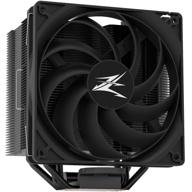
Zalman Performa Performance Powerful Included

172 Review
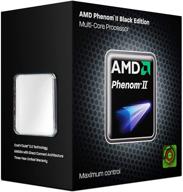
AMD Phenom II X4 940 💻 Black Edition 3.0GHz AM2+ Processor - Retail

96 Review
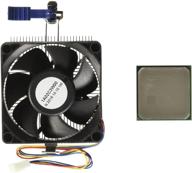
💪 AMD FD6300WMHKBOX FX-6300 Black Edition: 6-Core Processor with Unparalleled Performance

134 Review
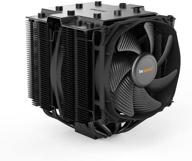
🌬️ Silent Cooling Power: Dark Rock Pro 4 CPU Cooler with 250W TDP, BK022

134 Review
Another interesting products
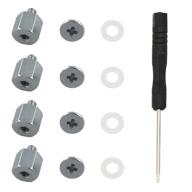
M.2 Screw Kit: Easy Mounting for NVMe SSDs on ASUS Motherboards

19 Review

Comprehensive 500pcs Laptop Screw Kit Set for 🔩 IBM HP Dell Lenovo Samsung Sony Toshiba Gateway Acer

12 Review
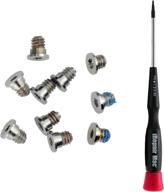
MacBook Retina 13-inch (A1425, A1502) and 🔩 15-inch (A1398) Bottom Case Screw Set with Pentalobe Screwdriver

11 Review
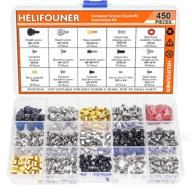
🖥️ Helifouner 450-Piece Computer Standoffs Spacer Screws Kit: Ideal for Hard Drive, Motherboard, Fan, Power Graphics & Computer Cases

10 Review

